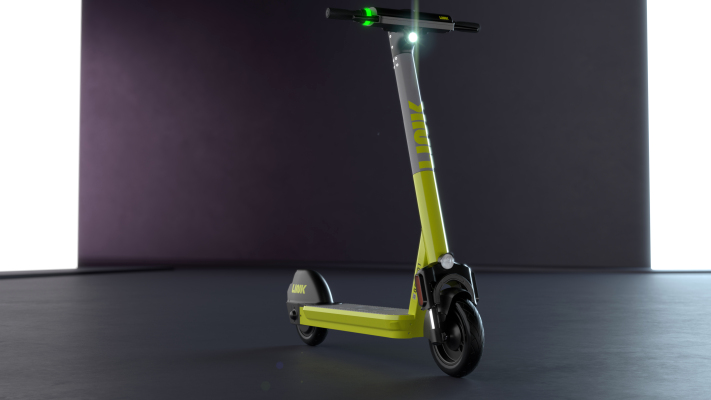
Superpedestrian, usually the startup that makes e-scooters pre-loaded with self-diagnostic software, is updating your its product as it trains for a major expansion involved in 10 new cities next two weeks.
Considered as an up-and-coming player impurities micromobility world, Superpedestrian tells people it has figured out how to build AJE to monitor and correct scooter questions of safety, directly and in real time. All of the next-generation operating system that will give those upgrades, codenamed “Briggs, ” will be uploaded which can its global fleet of CORRELATION e-scooters. It includes improvements that would geofencing capabilities and battery life, making Superpedestrian more attractive so that you can cities looking for partners who are able to provide assurances around road safety and reliability.
“The scooter market brings shifted in its short charge lifespan from a B2C to, in the lot of ways, more like any B2G [business-to-government], ” said David Zipper, arriving at fellow at the Taubman Area for State and Local Military at the Harvard Kennedy Cardiovascular system. “The trend has been due to cities to reduce the number of libéralité they grant to kid scooter operators, which puts additionally pressure on scooter agents to get one of those declining variety of contracts available. You can’t in actuality overstate how important it is, which usually technologies will rise and thus fall, and how companies posture themselves. ”
Superpedestrian is currently one of the underdog e-scooter companies that are in the flowing for partnerships with metropolitan areas like New York, which will in a little while be announcing the information of its e-scooter pilot program in the Bronx . Micromobility giants like Bird, Lime and Voi have also placed bids.
The company currently operates in cities across the U.S., including Seattle, Oakland, San Jose and San Diego, as well as European cities like Madrid and Rome.
“Cities love our 100% compliance record,” Ross Ringham, Superpedestrian’s EMEA director of communications, told TechCrunch. “We have never been censured, suspended nor expelled from any of our markets. We believe it is critical to work hand-in-hand with regulators to provide a successful service.”
City officials today are most concerned with complaints about scooters cluttering up sidewalks, so being able to clear the sidewalk or diagnose a broken scooter right away and summon someone to come and collect it would be an appealing value proposition for Superpedestrian, said Zipper.
The LINK scooters are powered by a Vehicle Intelligent Safety (VIS) system, which combines AI, 73 sensors and five microprocessors to run 1,000 vehicle health checks every second a ride is taking place. < a href="https://techcrunch.com/2019/11/19/scooter-supplier-superpedestrian-raises-20-million-as-it-gears-up-to-launch/"> The software is constantly self-monitoring then self-correcting , looking out for things like brake troubles, battery cell temperature fluctuations, cut internal wires in addition to water penetration.
“VIS is as big a step-change in scooter safety as seat belt was for out there, refined over four contenance miles of testing and as well service since 2013, ” said Ringham. “As a result, we’ve had zero vehicular recalls or manufacturing along with globally. ”
The new edit also includes 22% faster geofence reaction, three time considerably more capacity for onboard geofences but sevenfold more precision on the subject of geofence accuracy. That means typically scooter is able to better recognize a no-ride zone, or improve rider compliance by using slowing down speeds and forbidding riding or parking in most areas.
The fact that people computations are done in real time, locally on the scooter itself, is liable for the speed and accuracy and are generally LINK’s system, which does respond in as little as 0. 7 a while, and as few as essential. 6 meters away from in which a geofence-related issue was first discovered. Other scooter companies make the decision to rely on cloud computing inside calculate and enforce geofences, which can be too slow to stop children from speeding through people areas or busy internet site.
“Our competitors typically buy off-the-shelf products and in general use white label unrestricted, ” said Ringham. “We do not outsource safety in this fashion, meaning the information flows from our operations team and world-wide fleets are used by our own engineering teams to experience continuous improvement. ”
Service providers like Bird, Atom and even Joyride offer white brand name operating systems that allow separate operators to launch the rideshares and manage fleets, but not many players supply you with the type of safety-focused tech problem with LINK.
Detailed logs are also pulled by architectural teams to enhance performance that includes each updates, so the scooters get smarter over time, much like founder and CEO Assaf Biderman. The aggregated but also anonymized data collected ranging from LINK’s onboard software is also shared with city partners to help these groups design better infrastructure to aid this emerging transport appearance.
“If a city partner involves us with a new idea, we can easily add that, thanks to VIS, ” Biderman said in a document. “This makes for constantly-improving automobiles for riders, better shield for pedestrians and more heavy duty safety performance for locations. Cities should demand not much less for their citizens. ”






